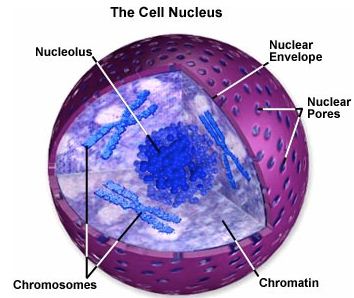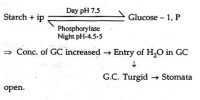Nucleolus: The denser, small and round body found in the nucleus is the nucleolus. Every nucleus normally contains a single nucleolus. The nucleolus is usually attached to a certain area of a Particular chromosome. The region of the chromosome where it remains attached is called ‘secondary constriction’.
Chemical composition: The main compositions of the nucleolus are protein, RNA and a trace of DNA.
Physical structure: Nucleolus is usually divided into three parts namely fibrous, granular and matrix.
Function: To synthesise various types of DNA and protein and preserve them.

Chromosome: In every nucleus, there is a definite number of chromosomes according to the characteristic of definite species. It can be seen under the microscope after proper staining, only in a dividing cell. Every chromosome contains one or more centromere, one chromonema or more chromonemata and some chromosome may have satellite. Chromosome bears a number of gene and genes are responsible for expressing characteristics of different species.
The chemical composition of chromosome: Chemically each chromosome is composed of DNA, RNA, Histon and non-histon protein. Besides, some calcium and magnesium are also present here.
Function: Chromosome is the bearer and carrier of hereditary properties of the organism.












